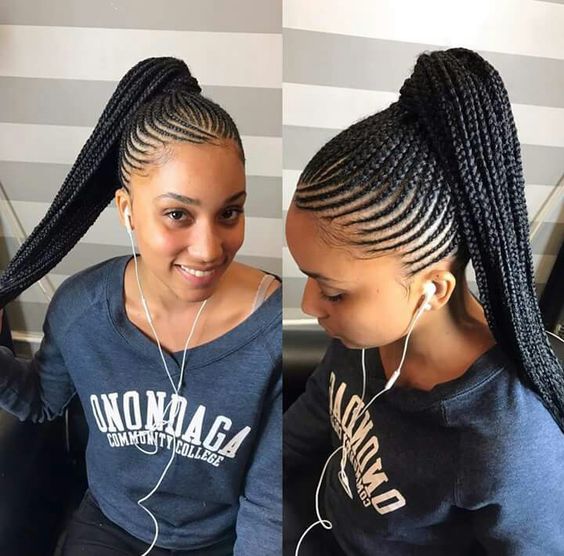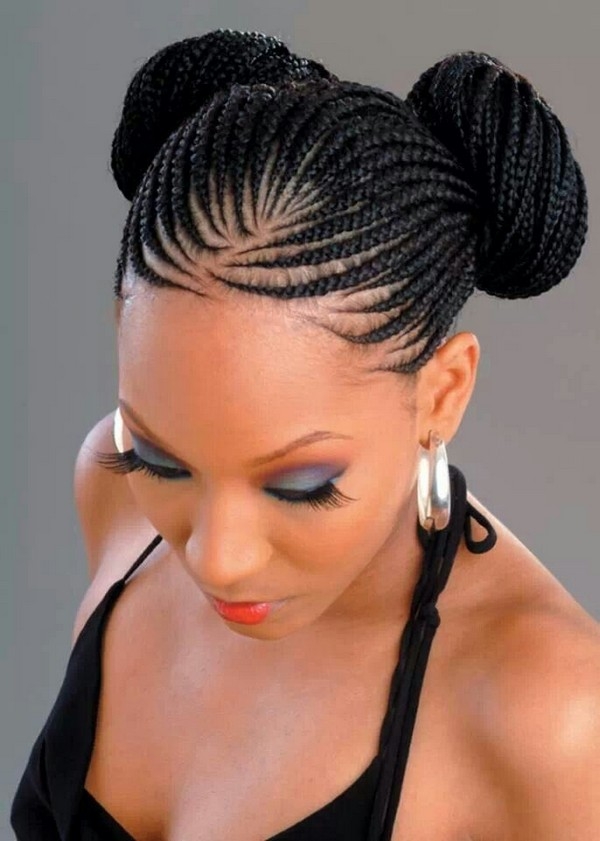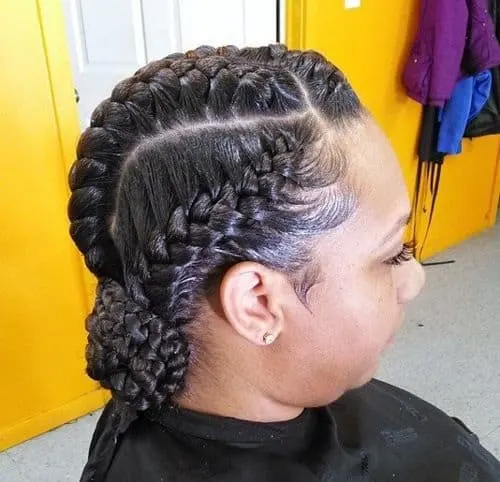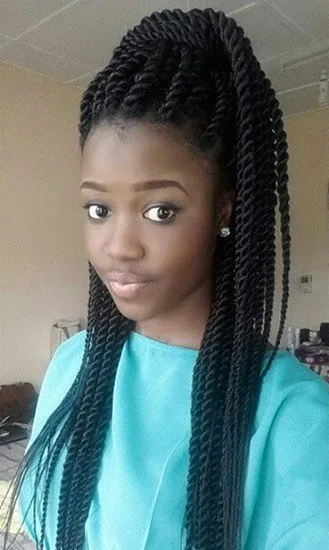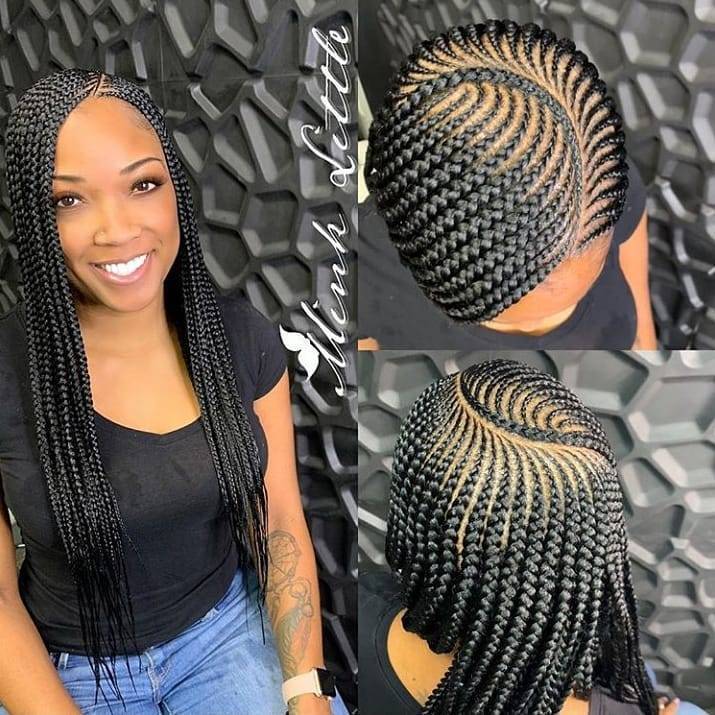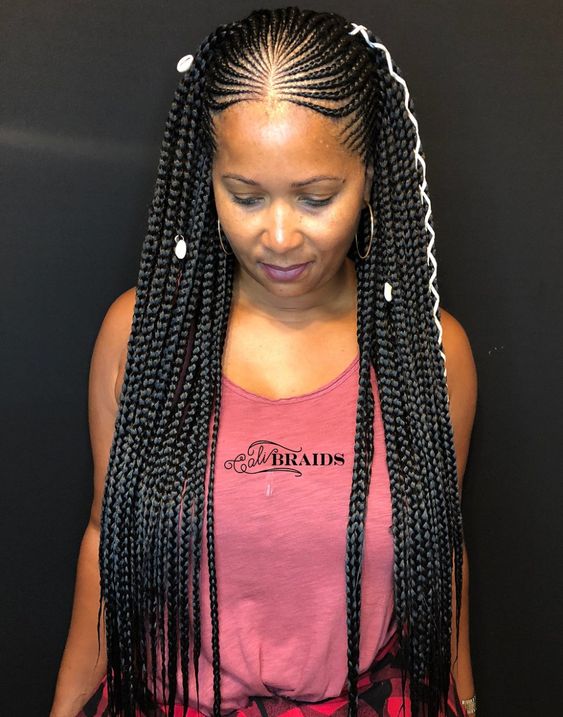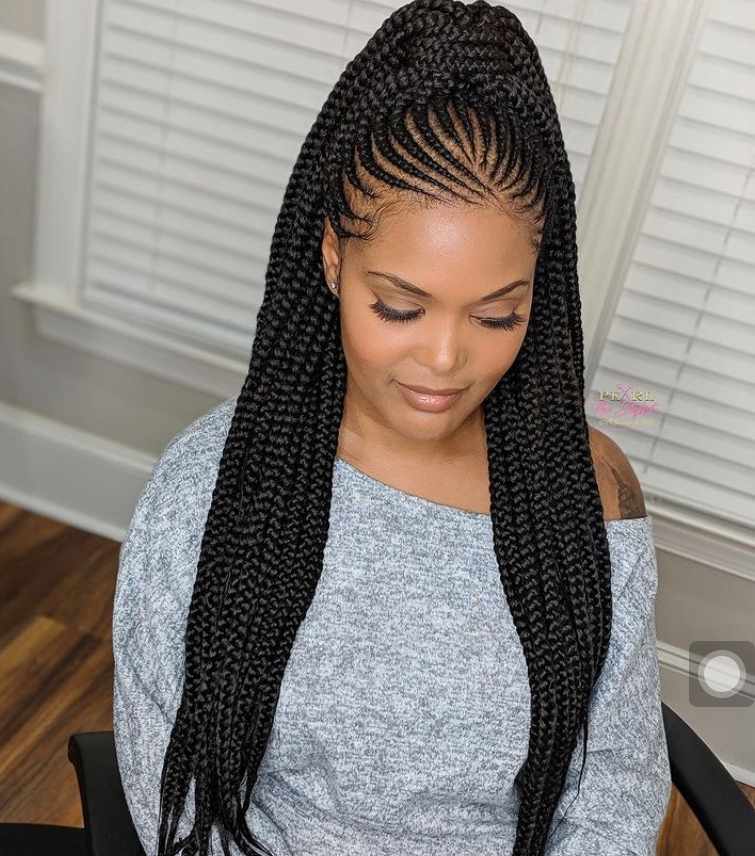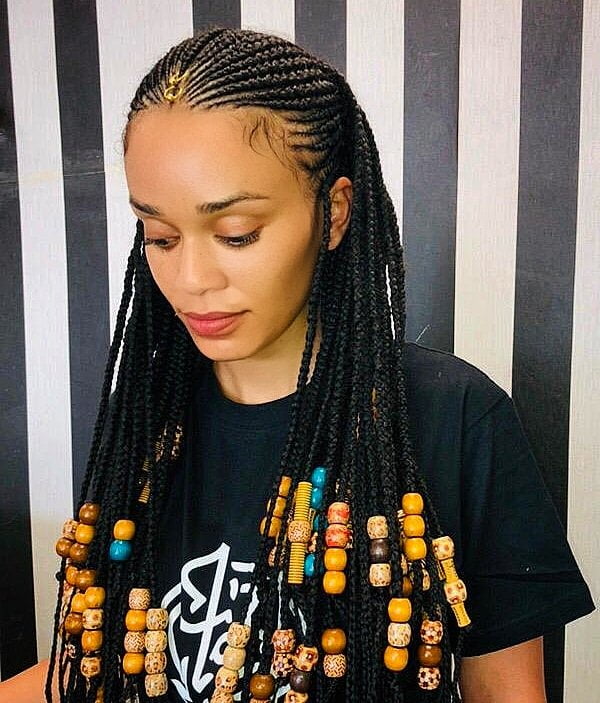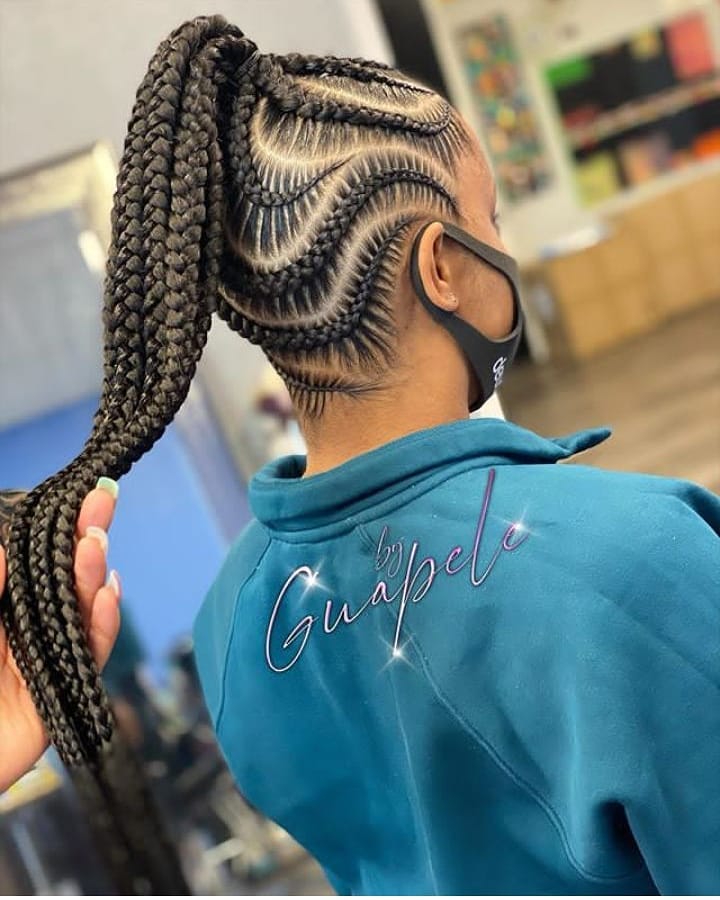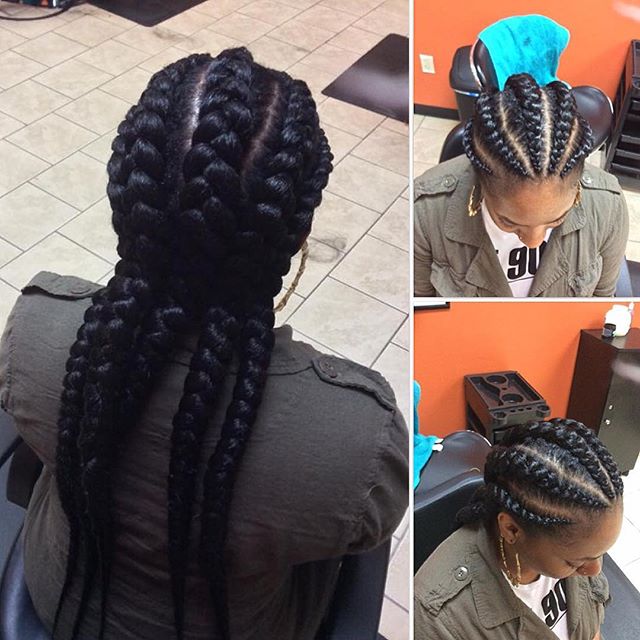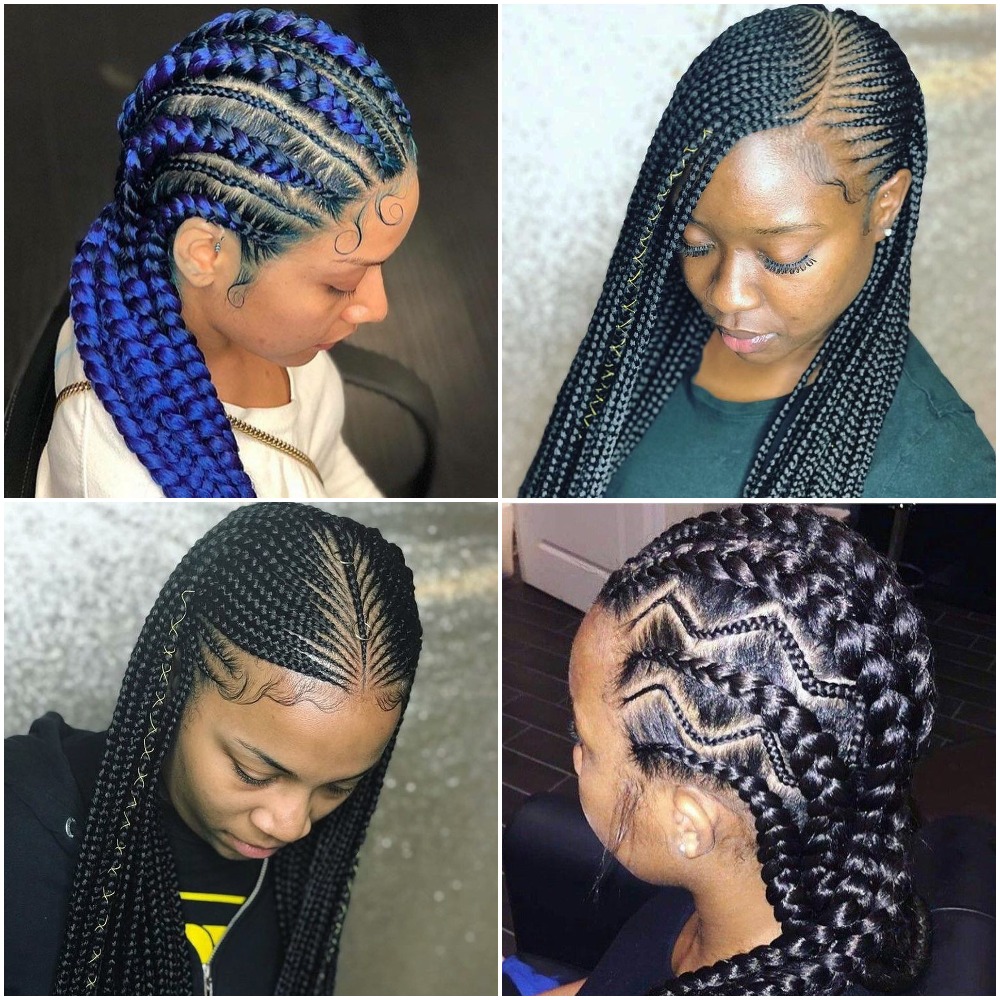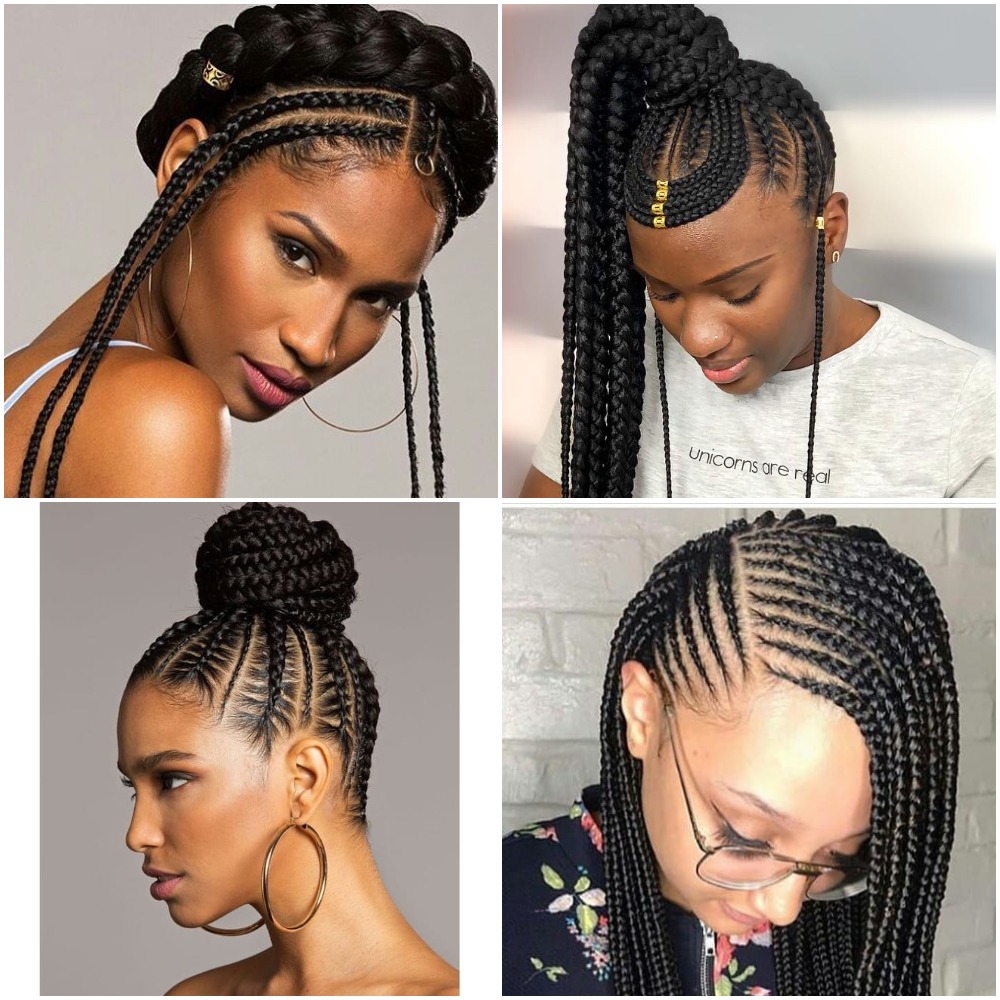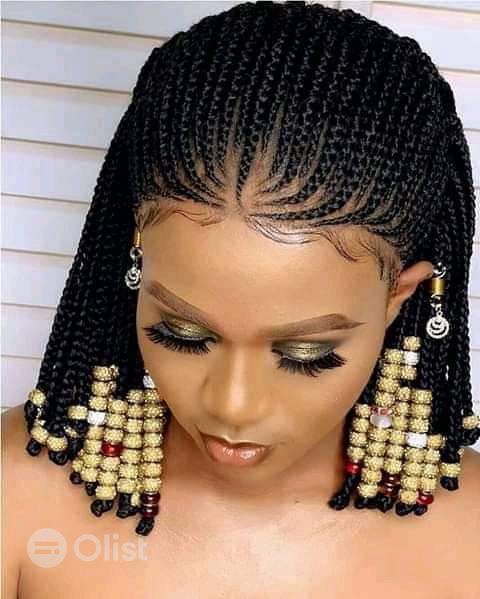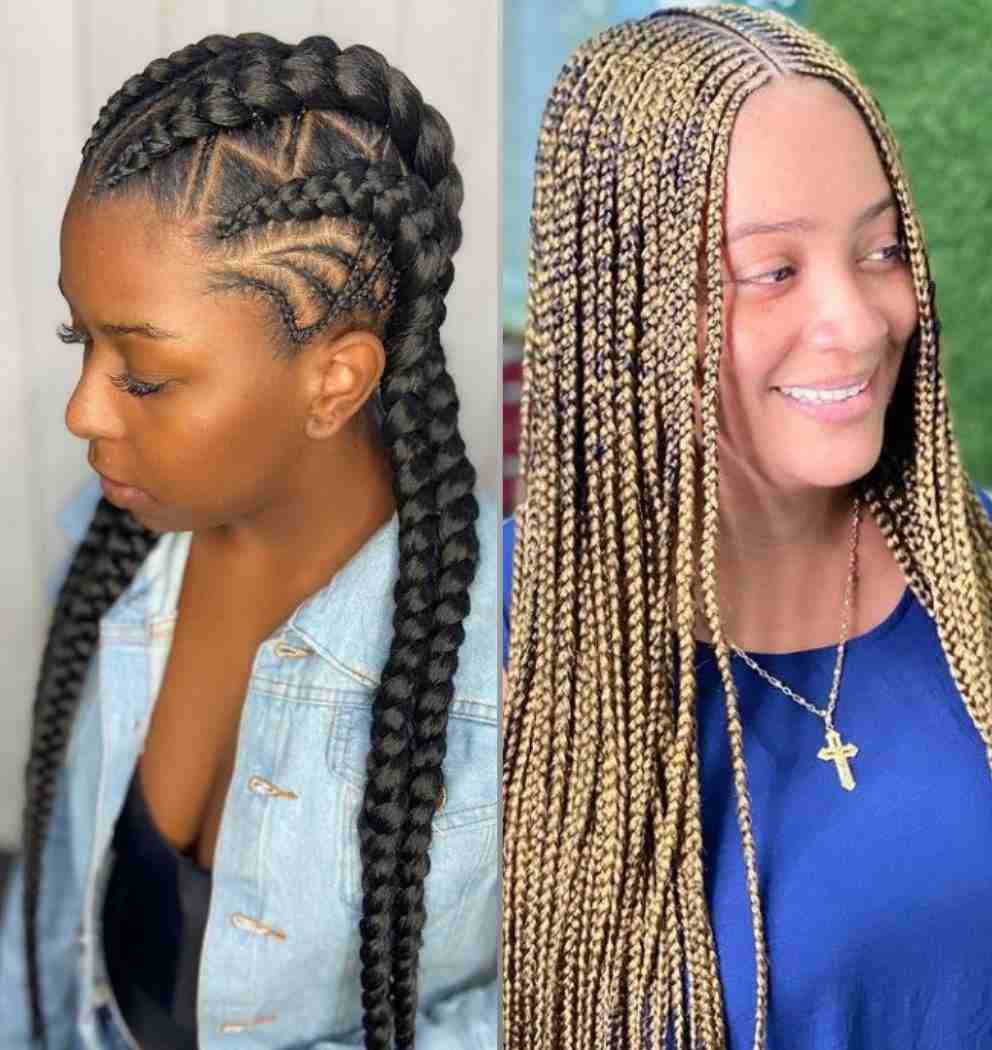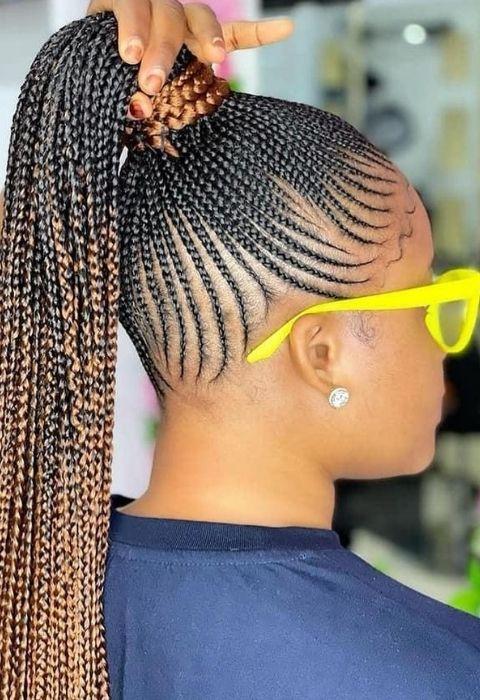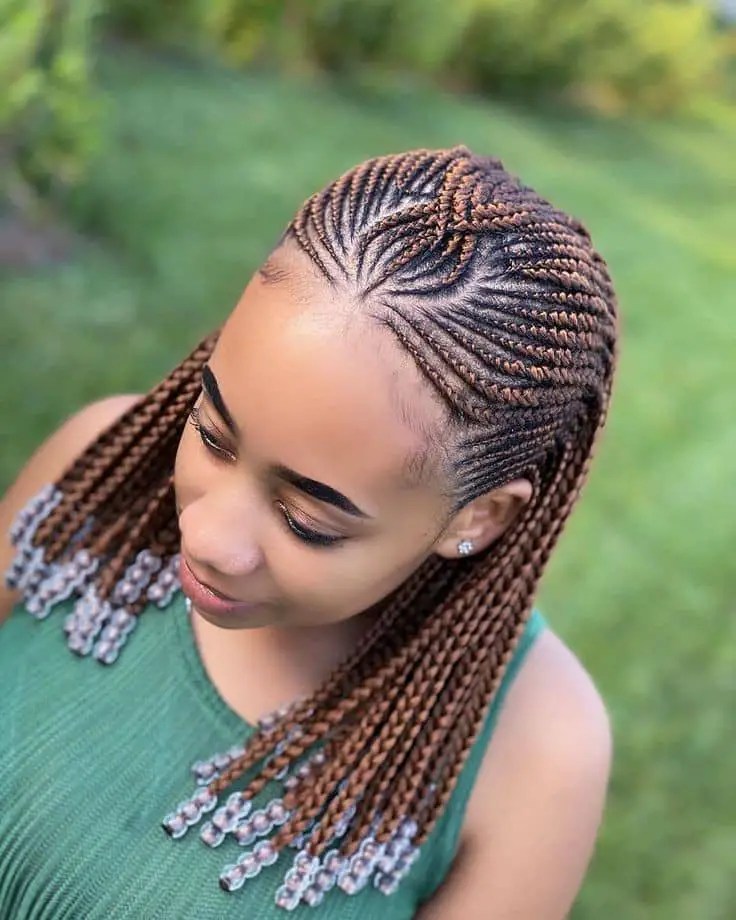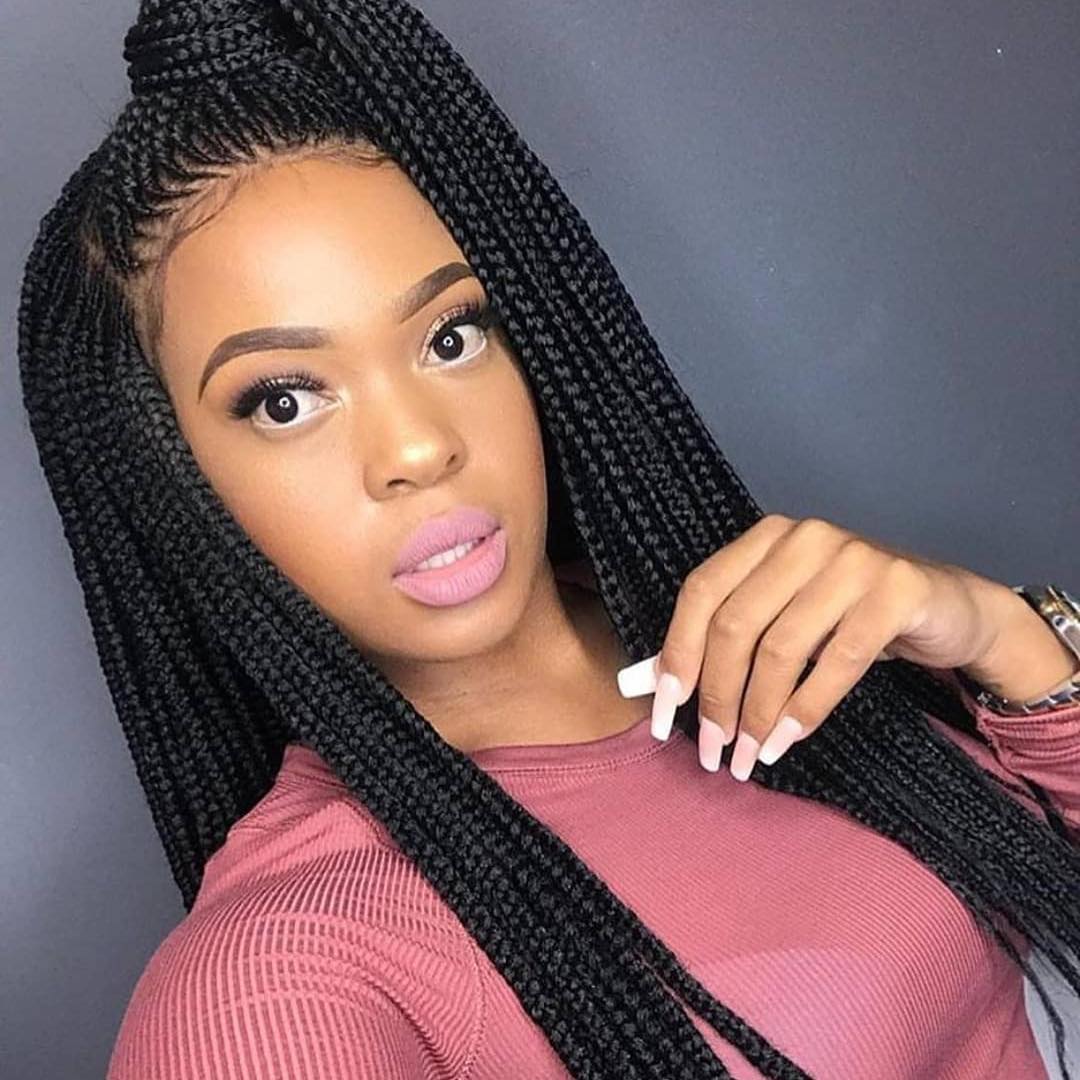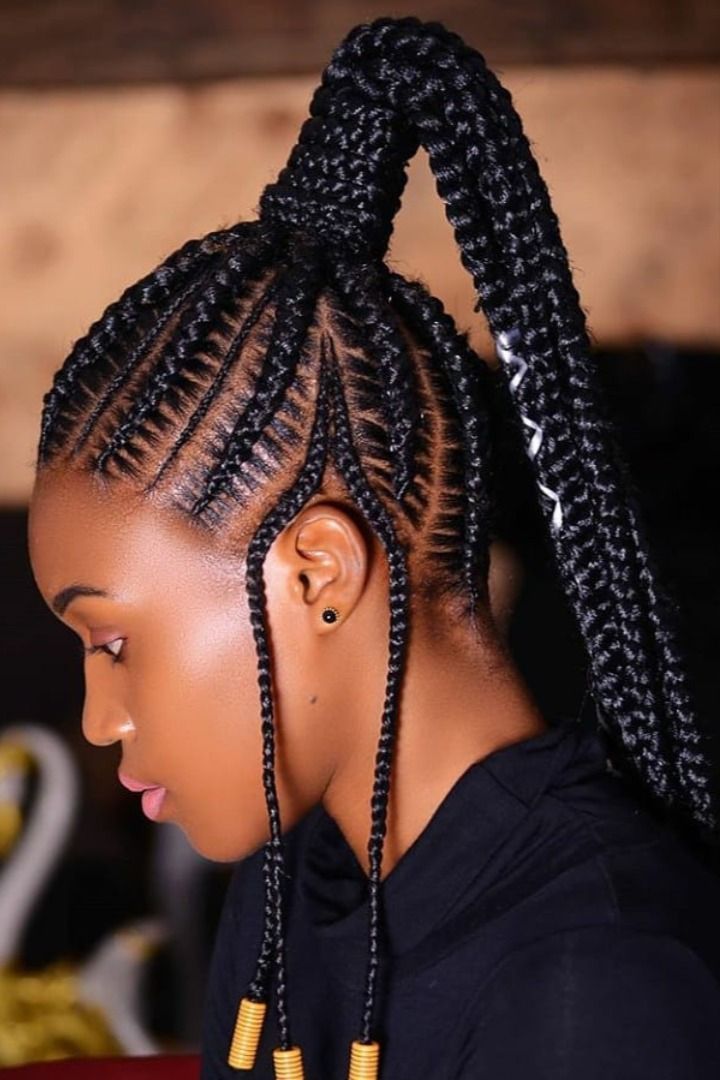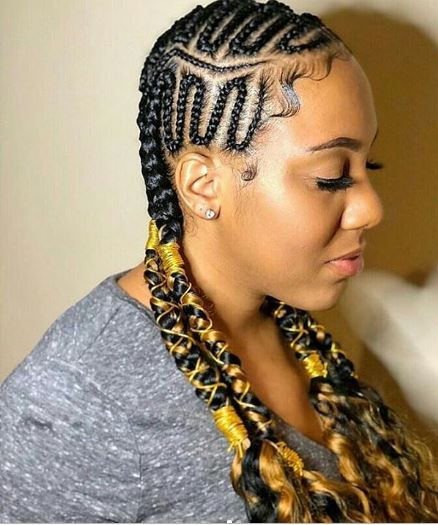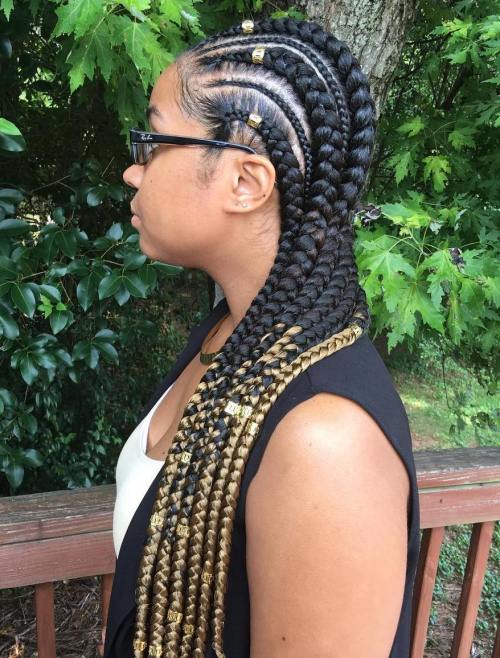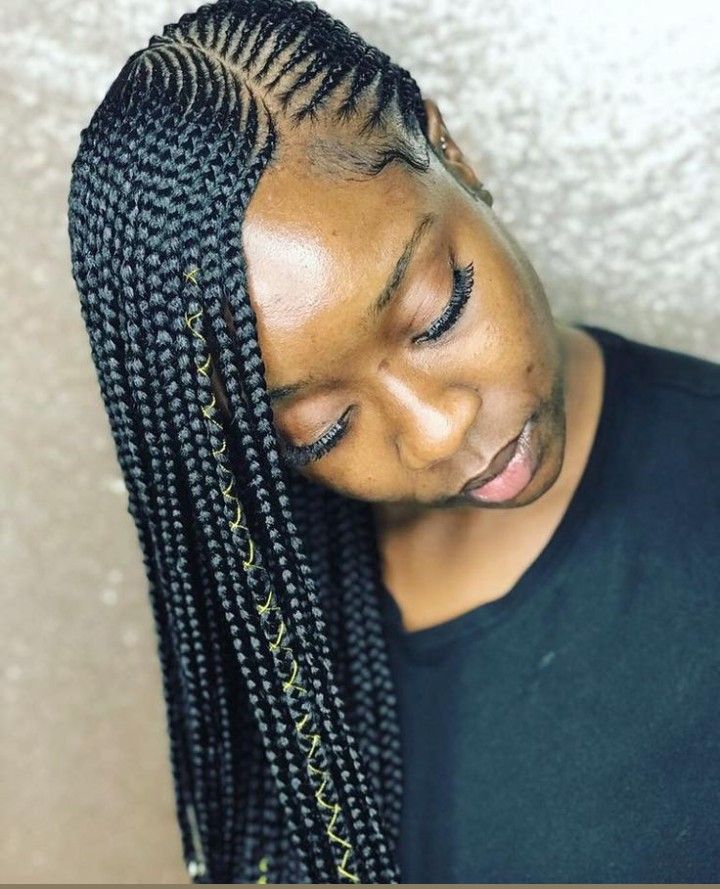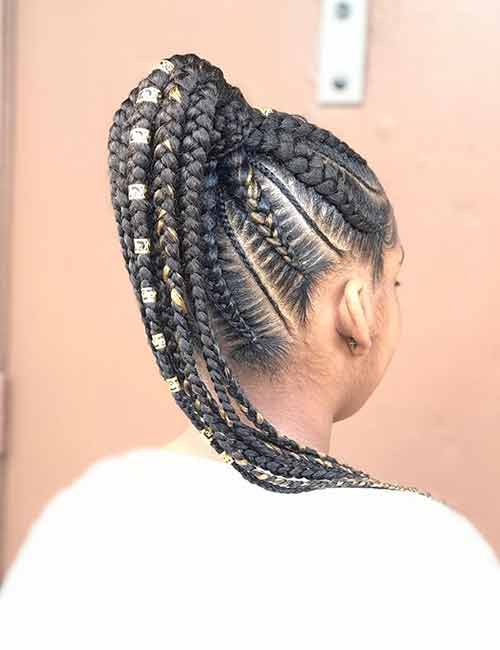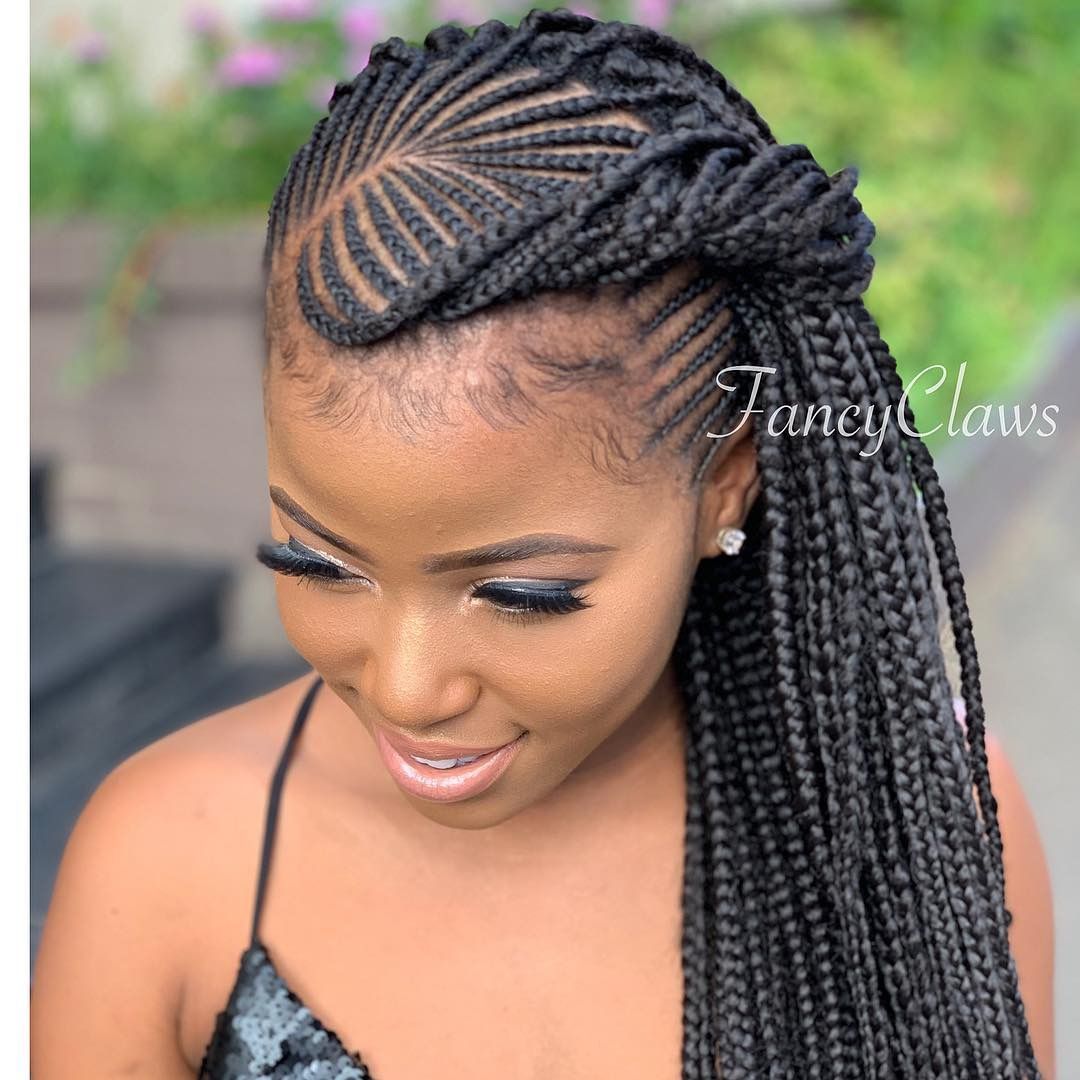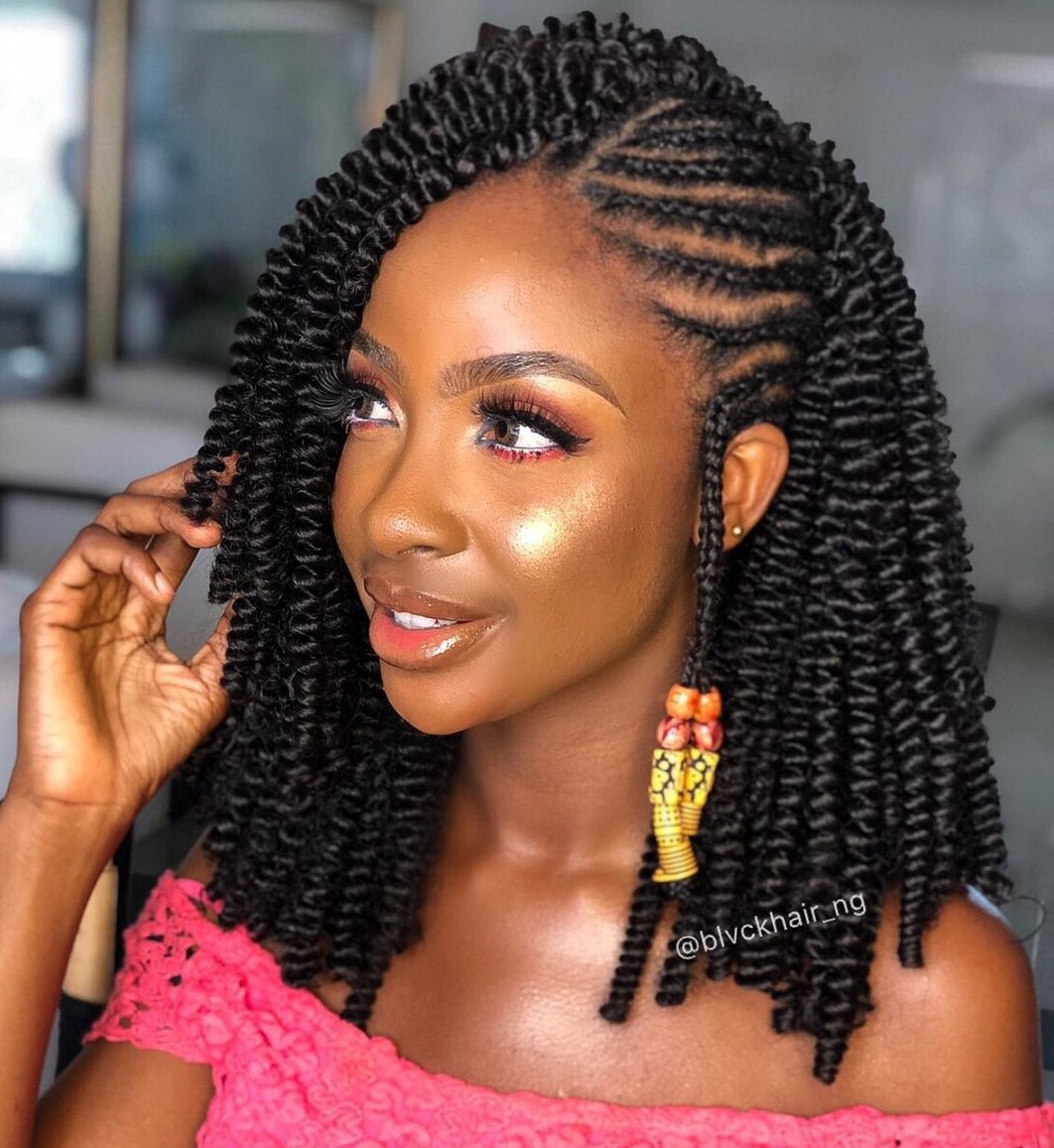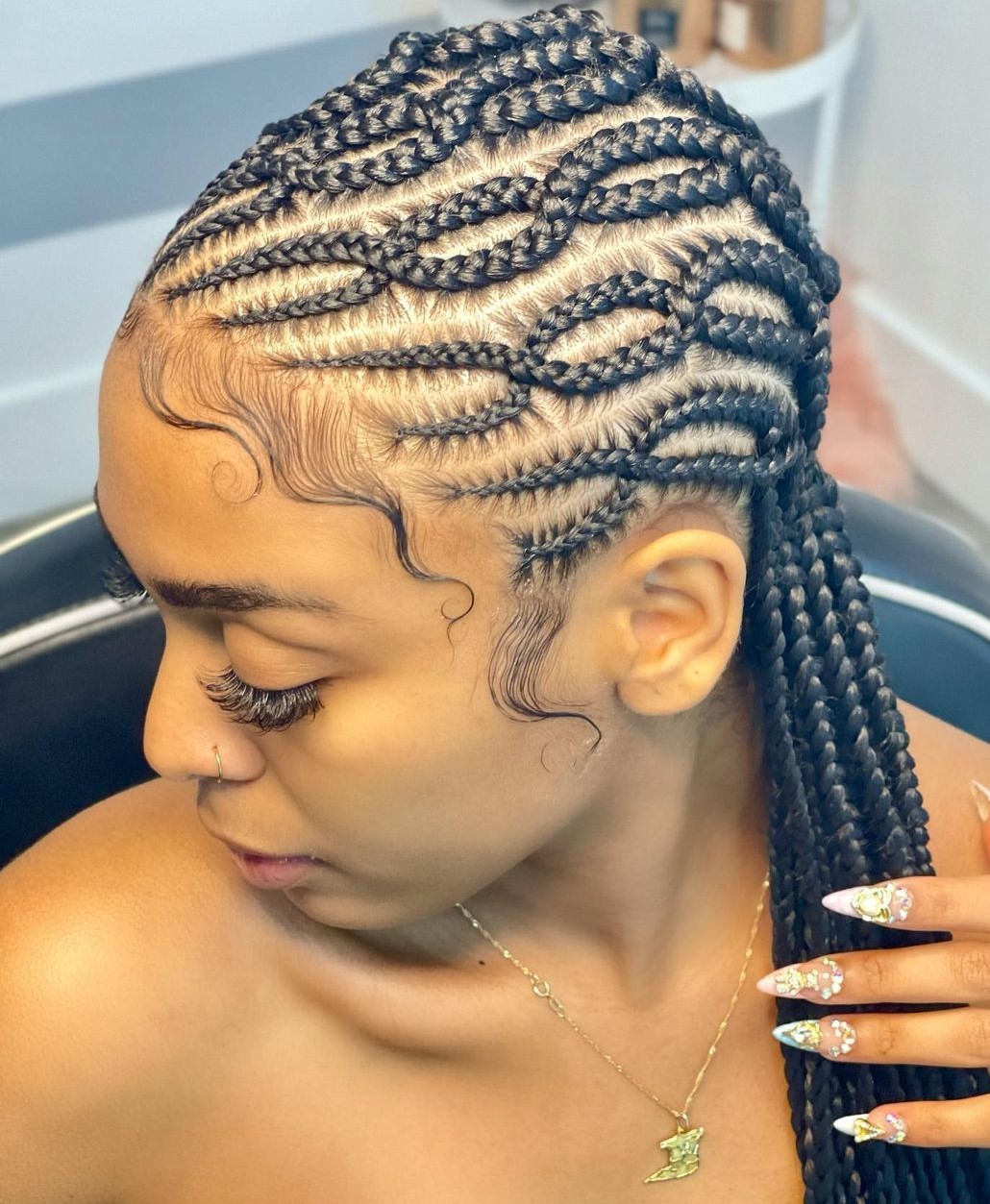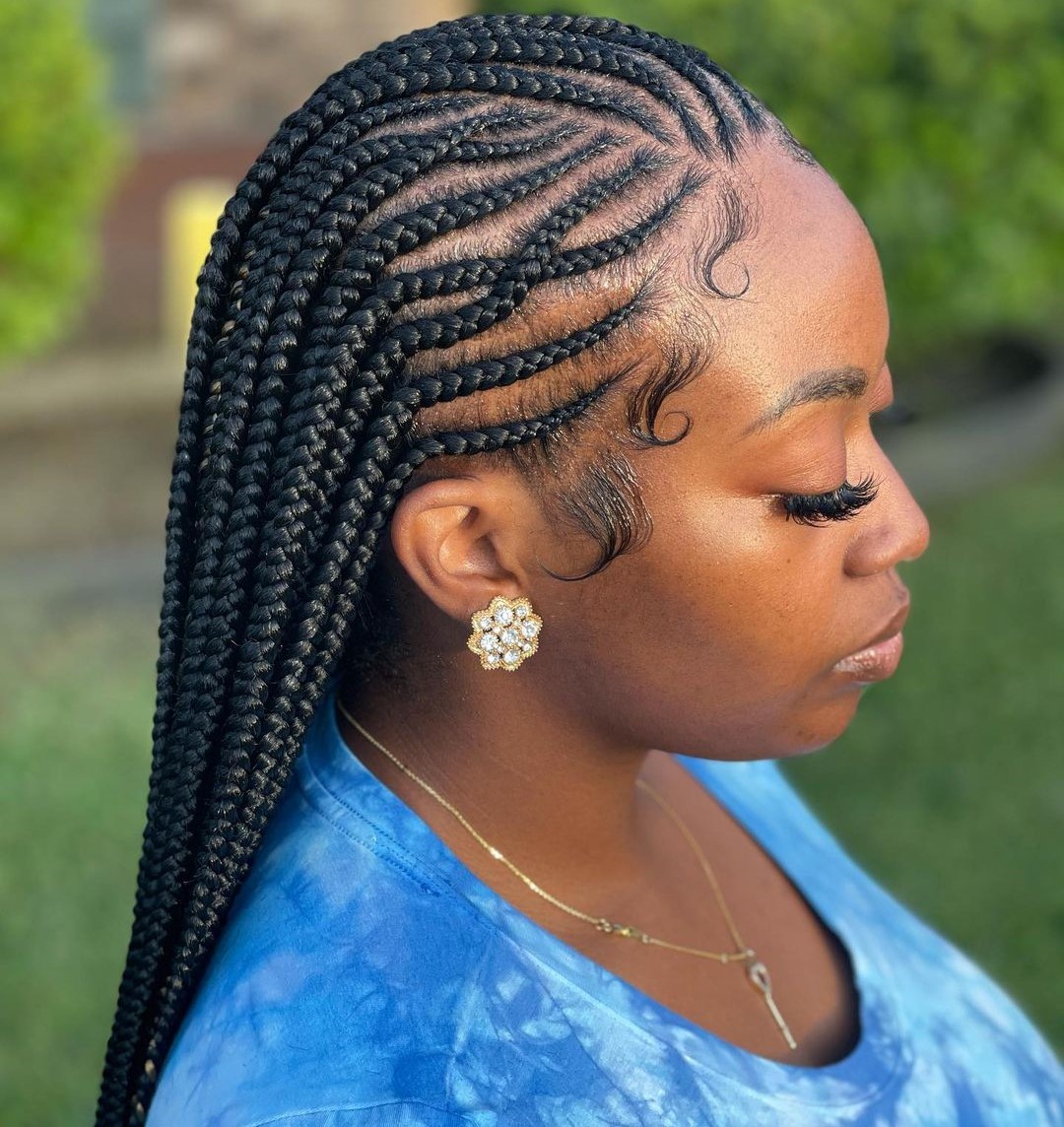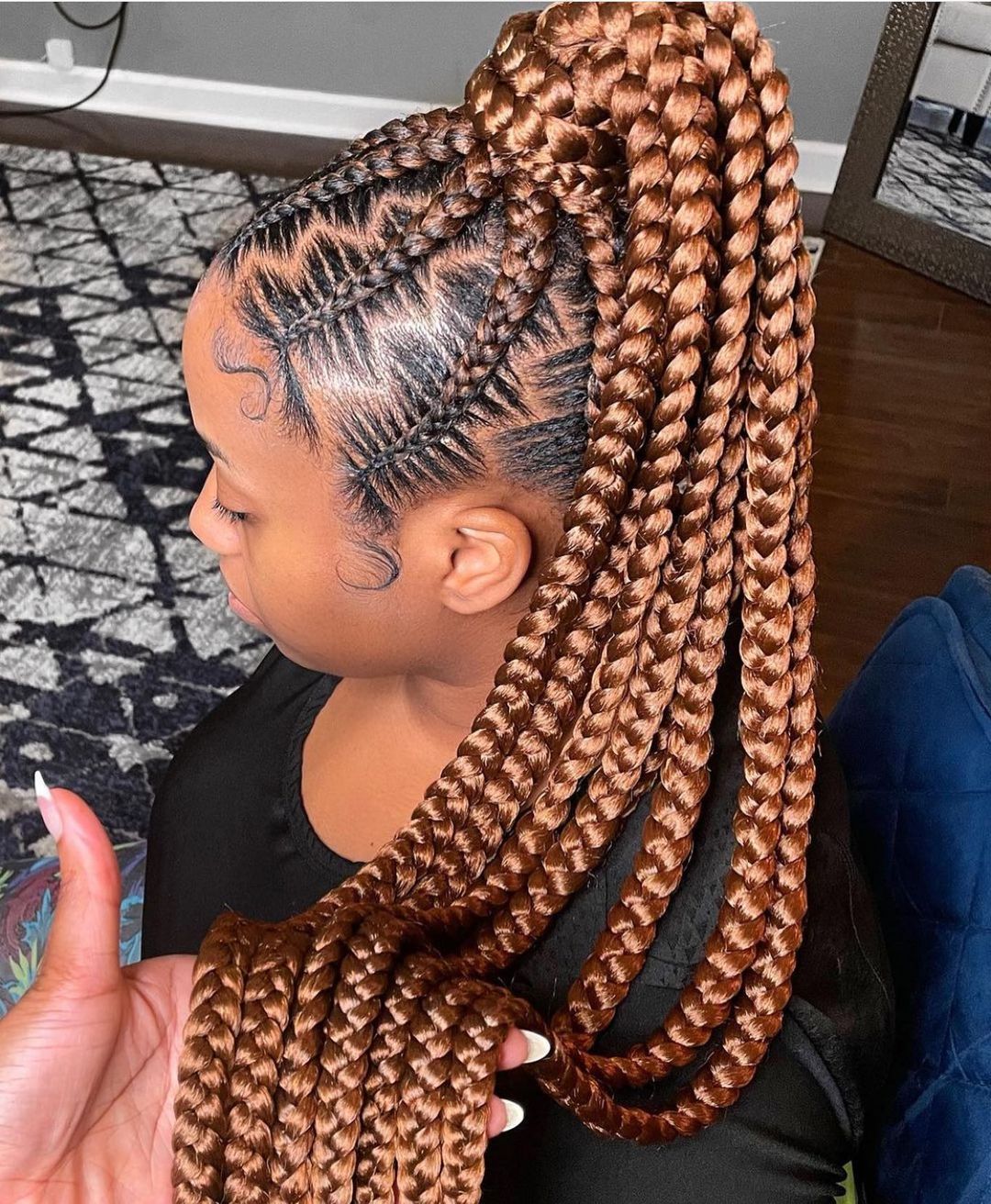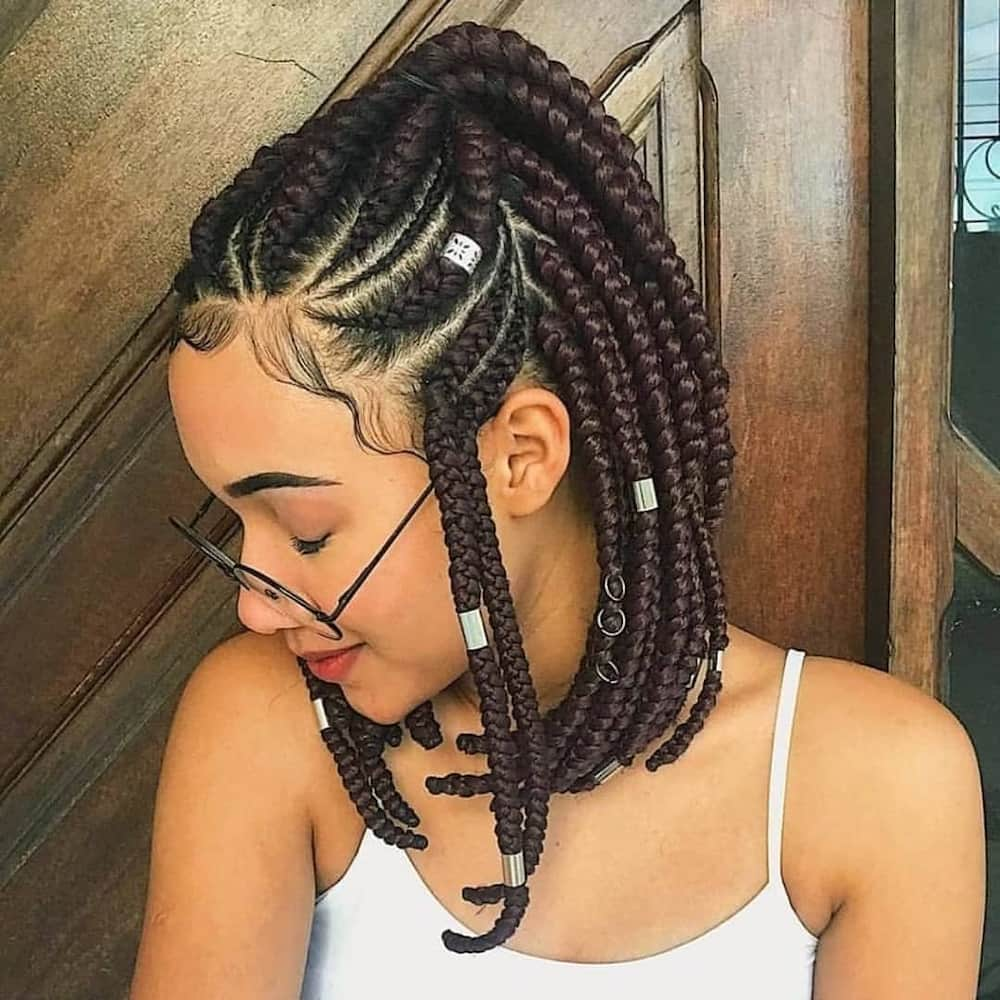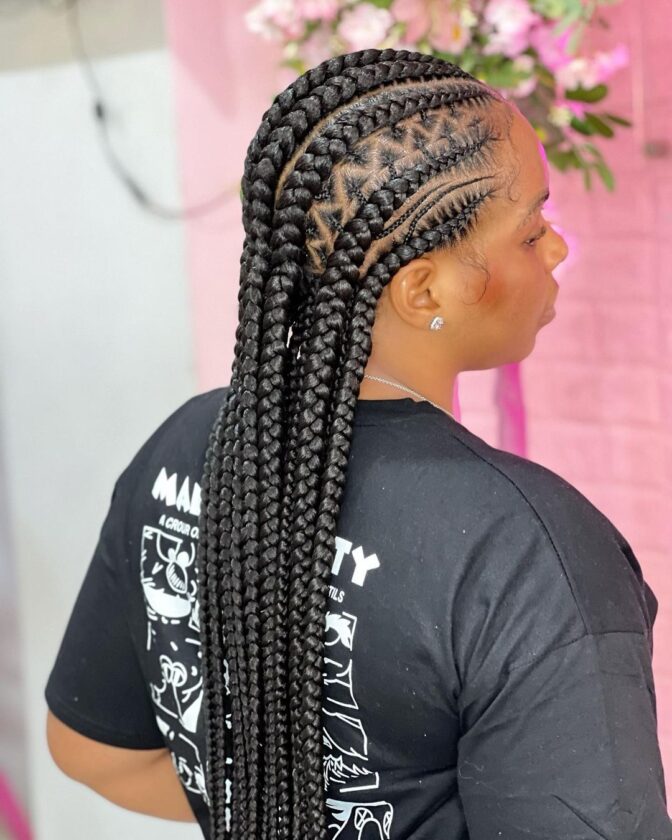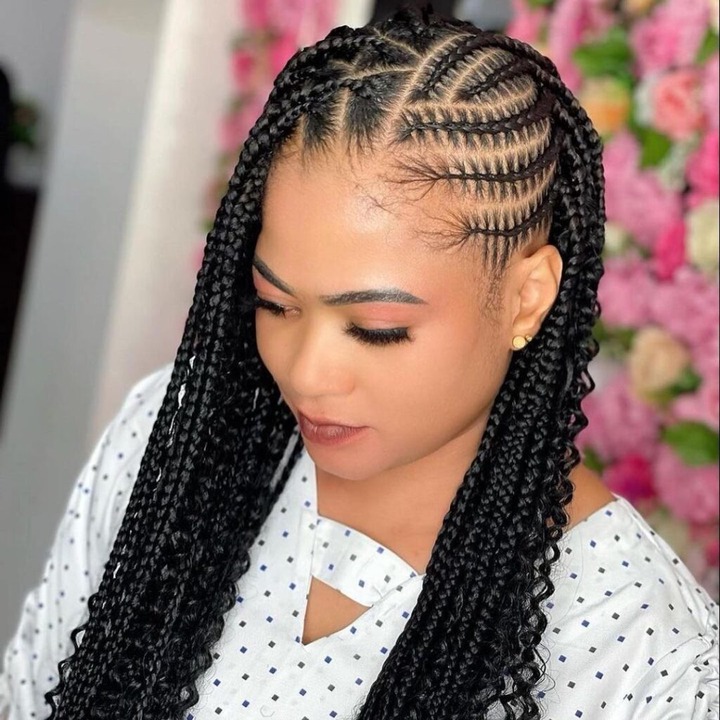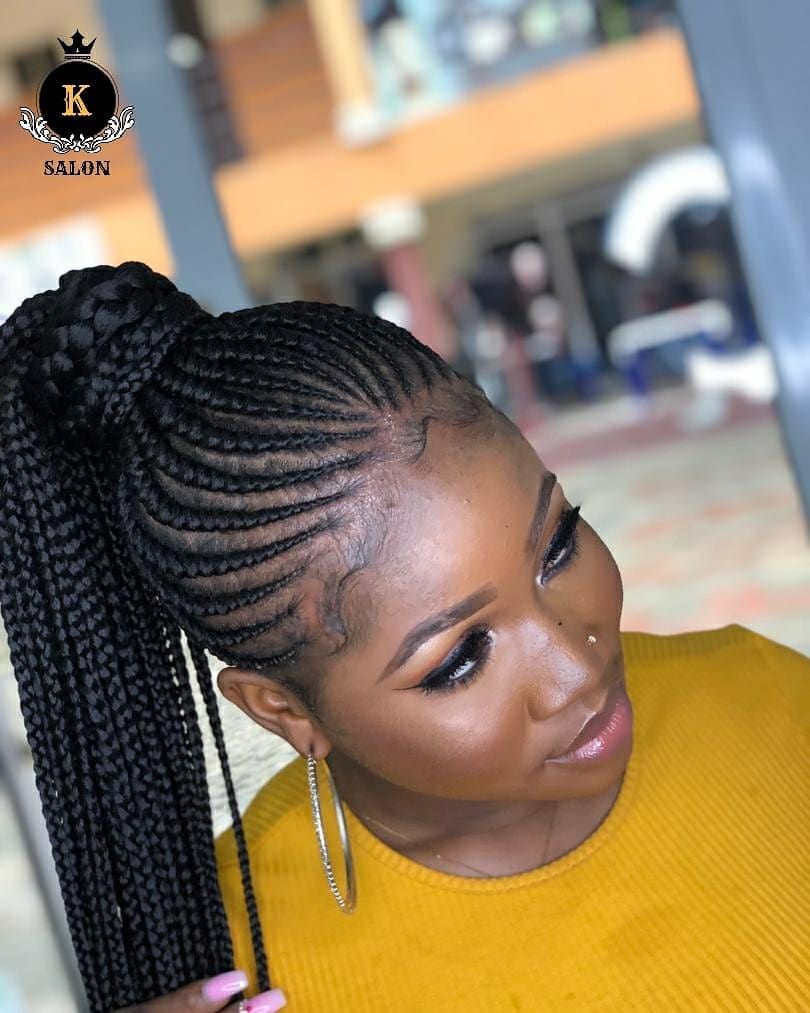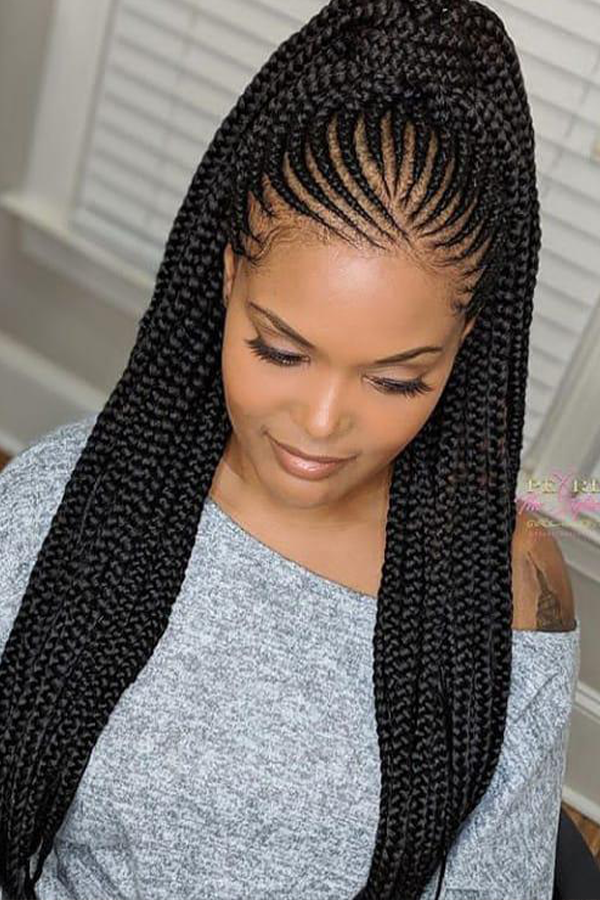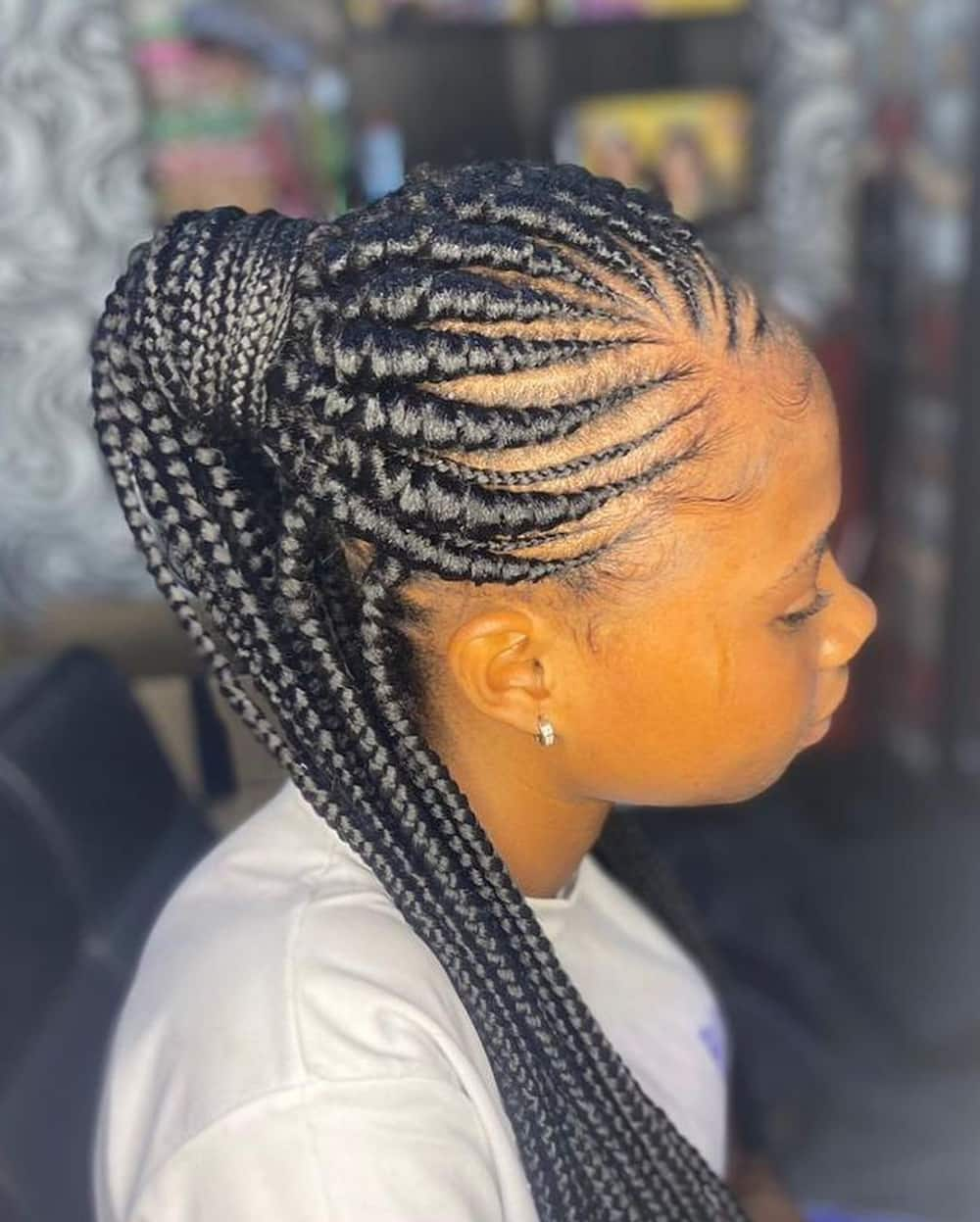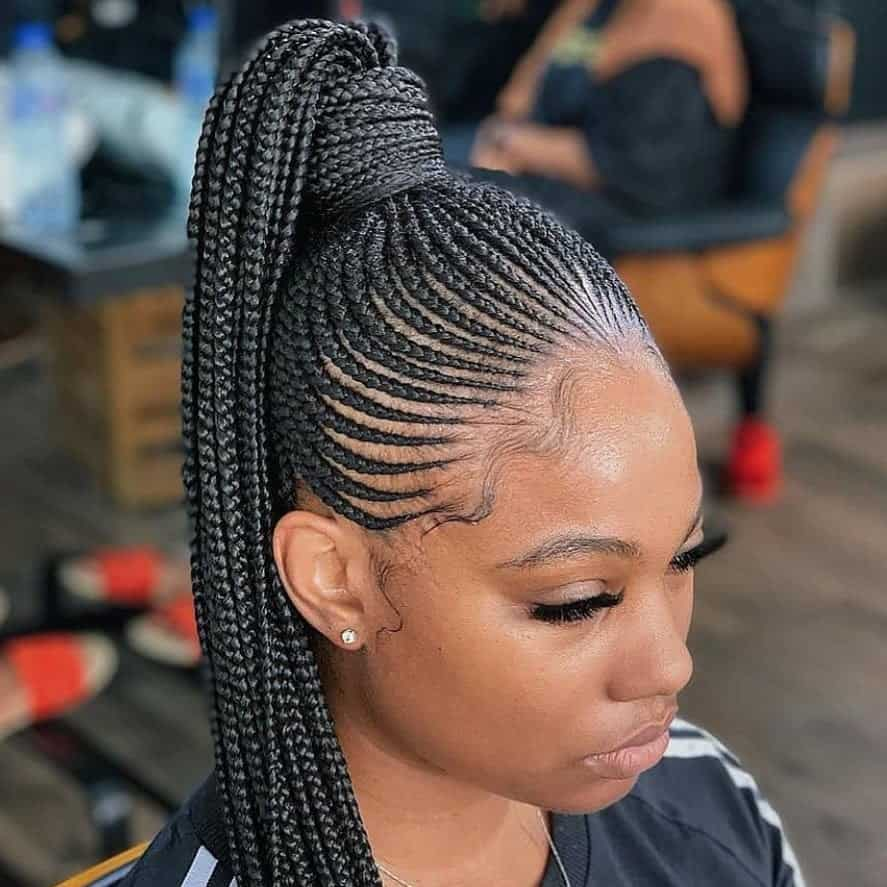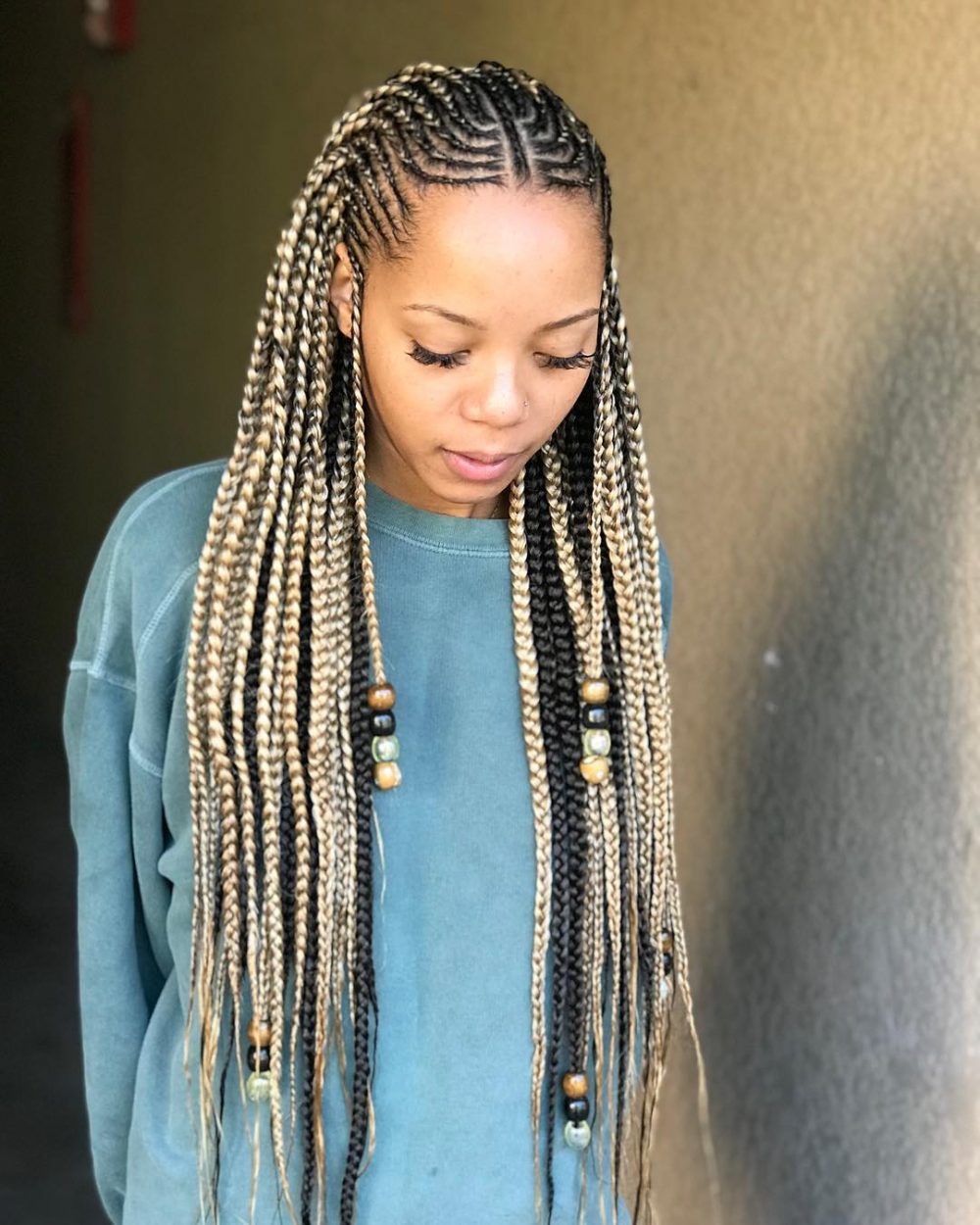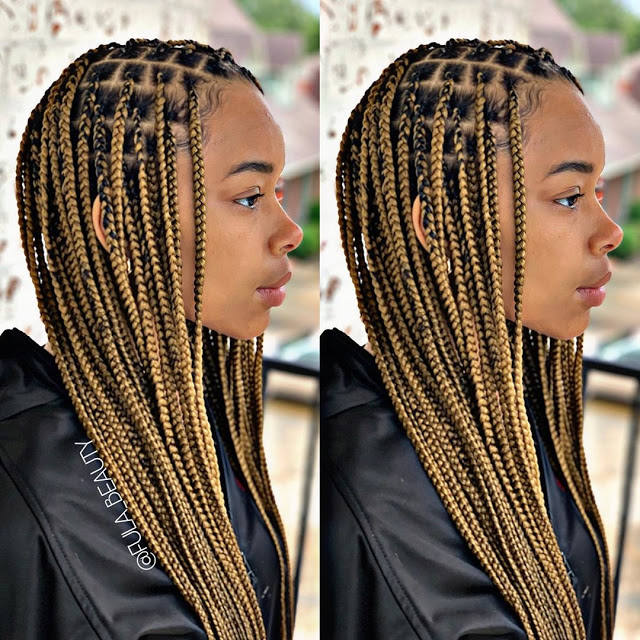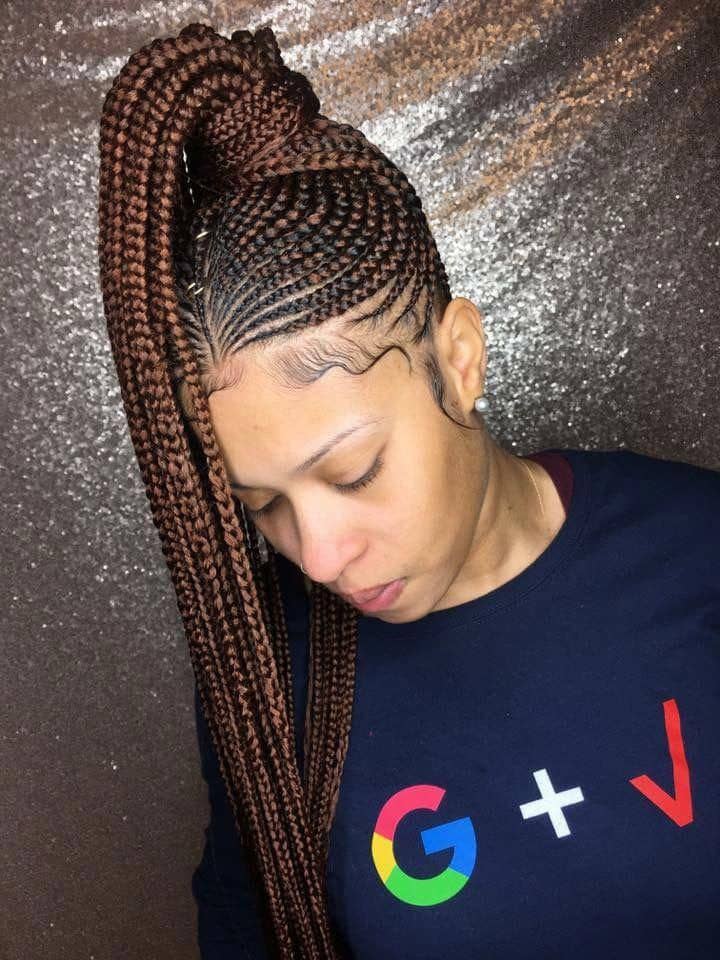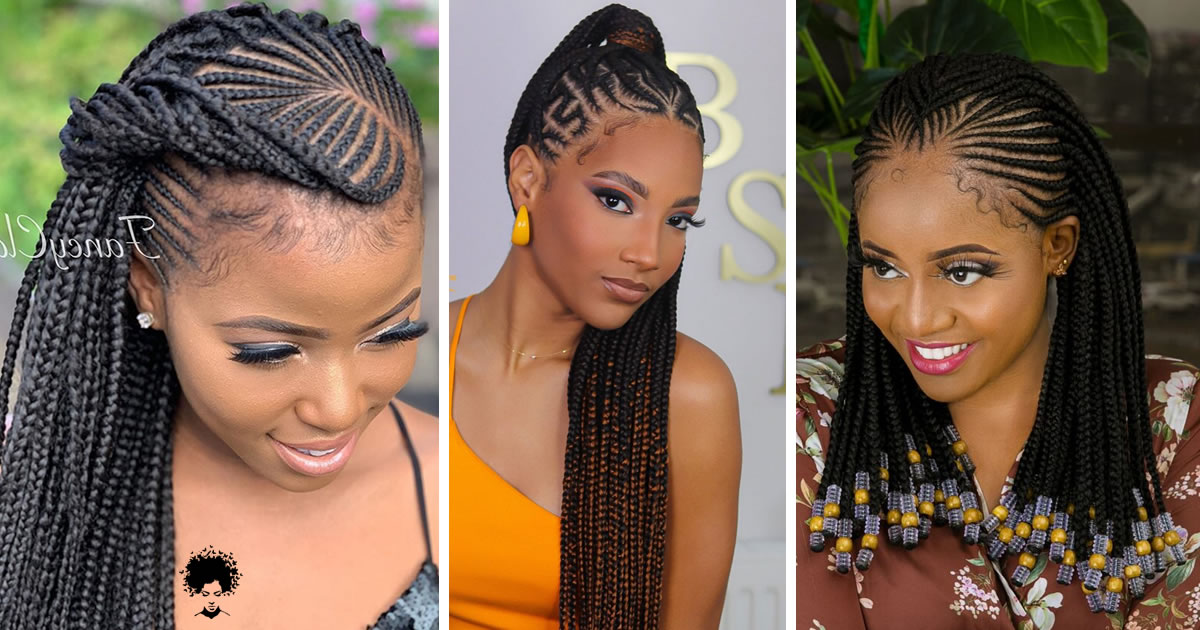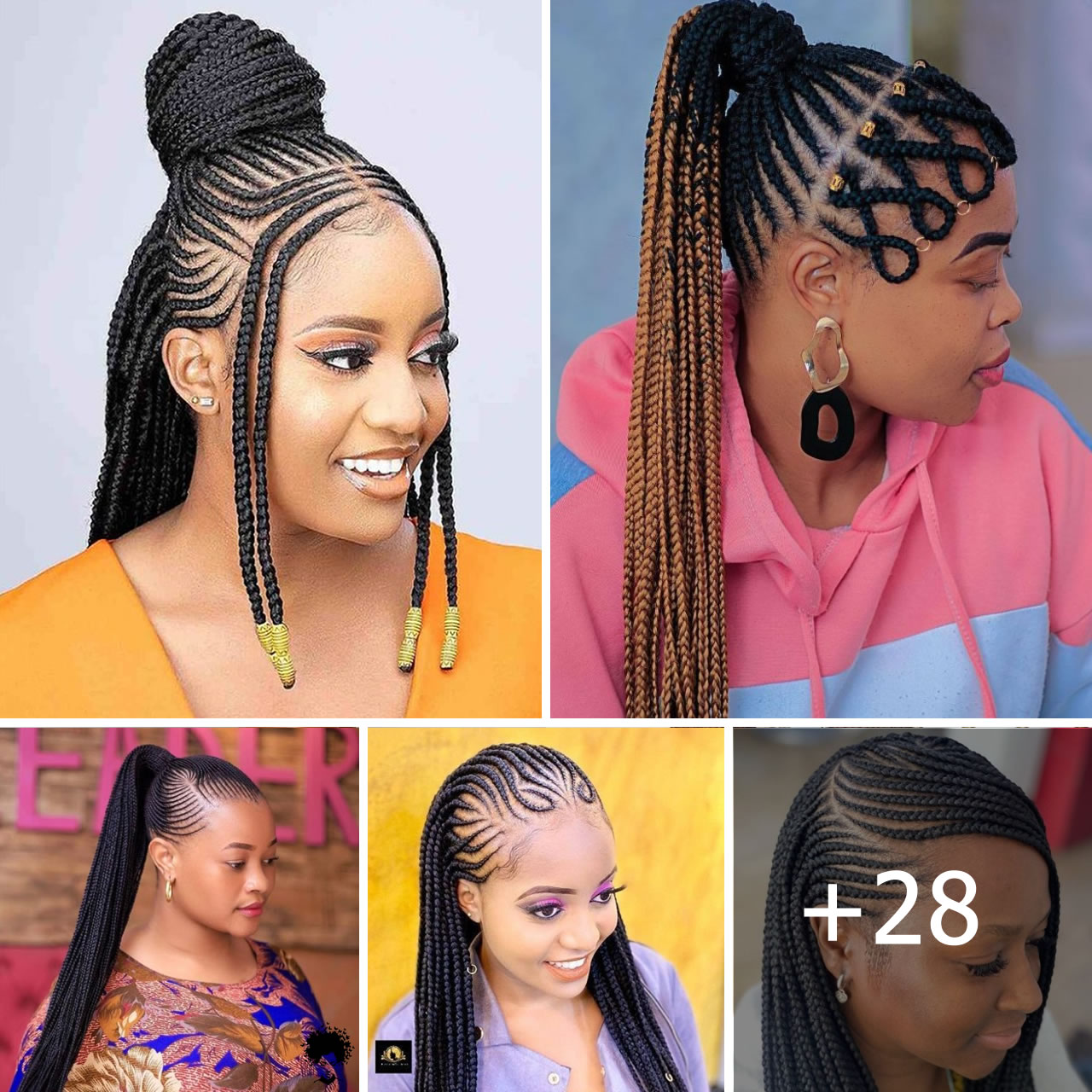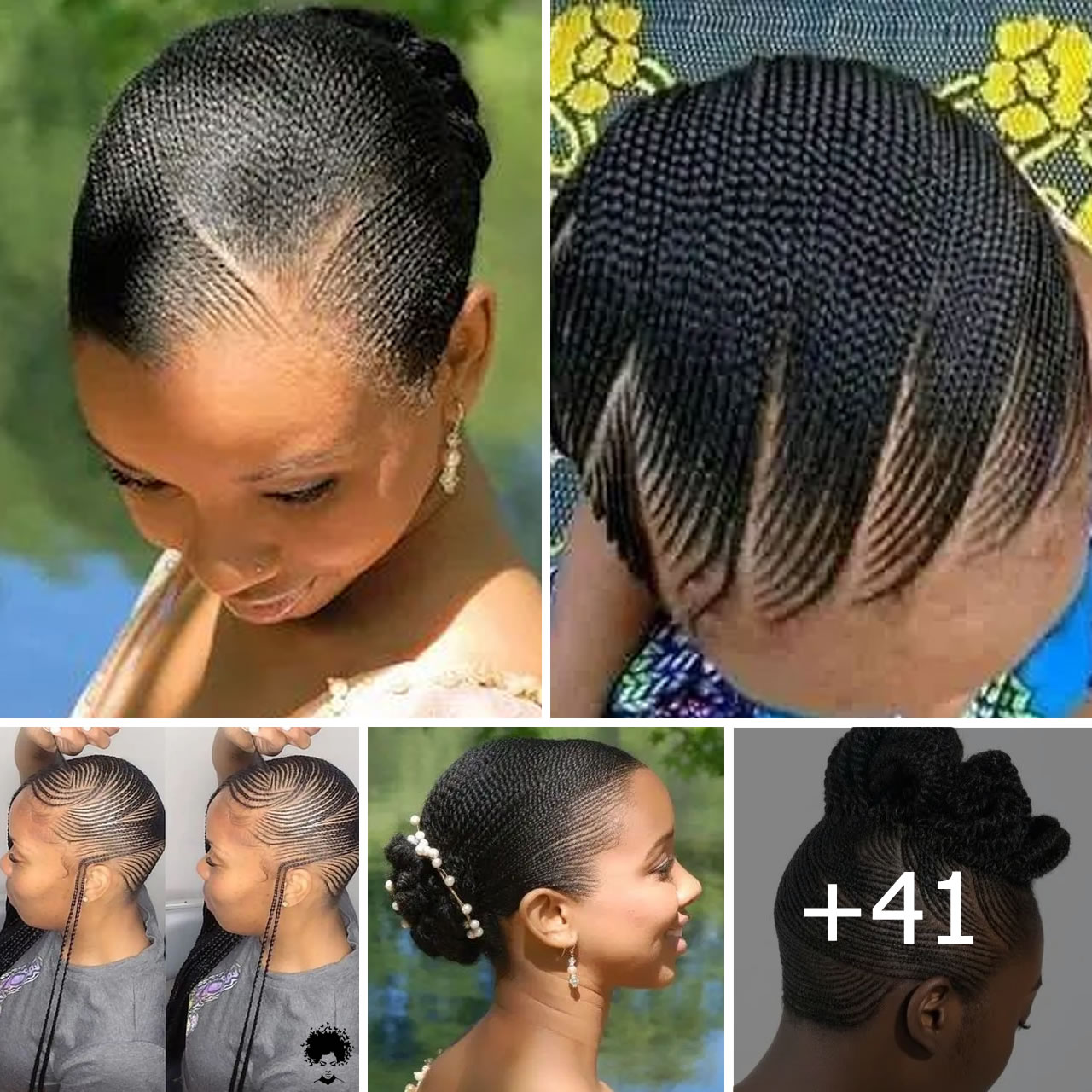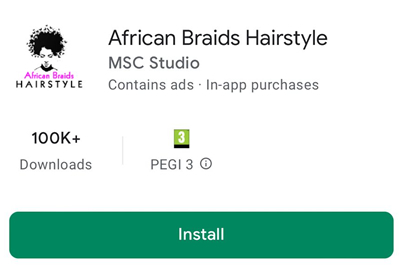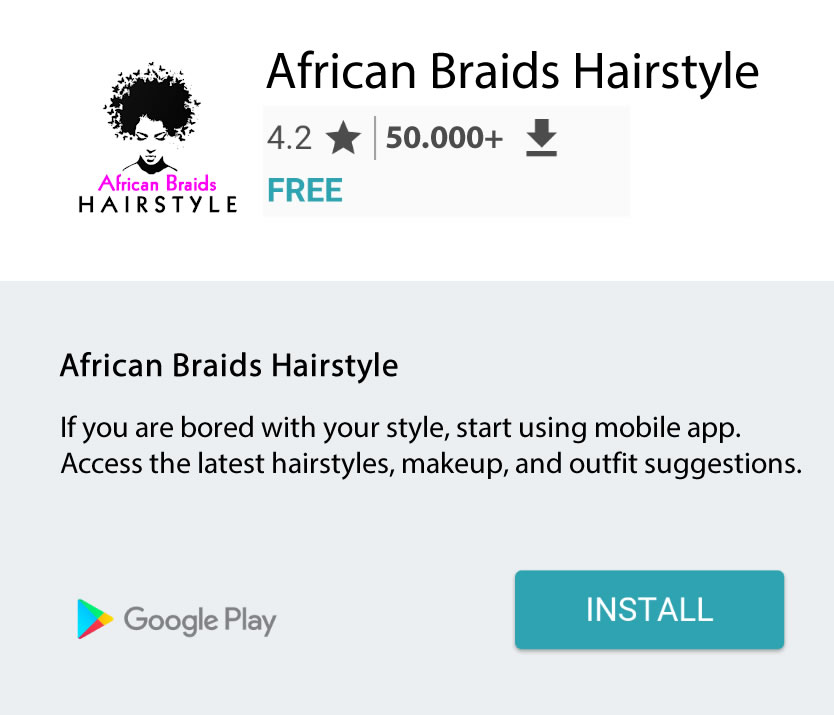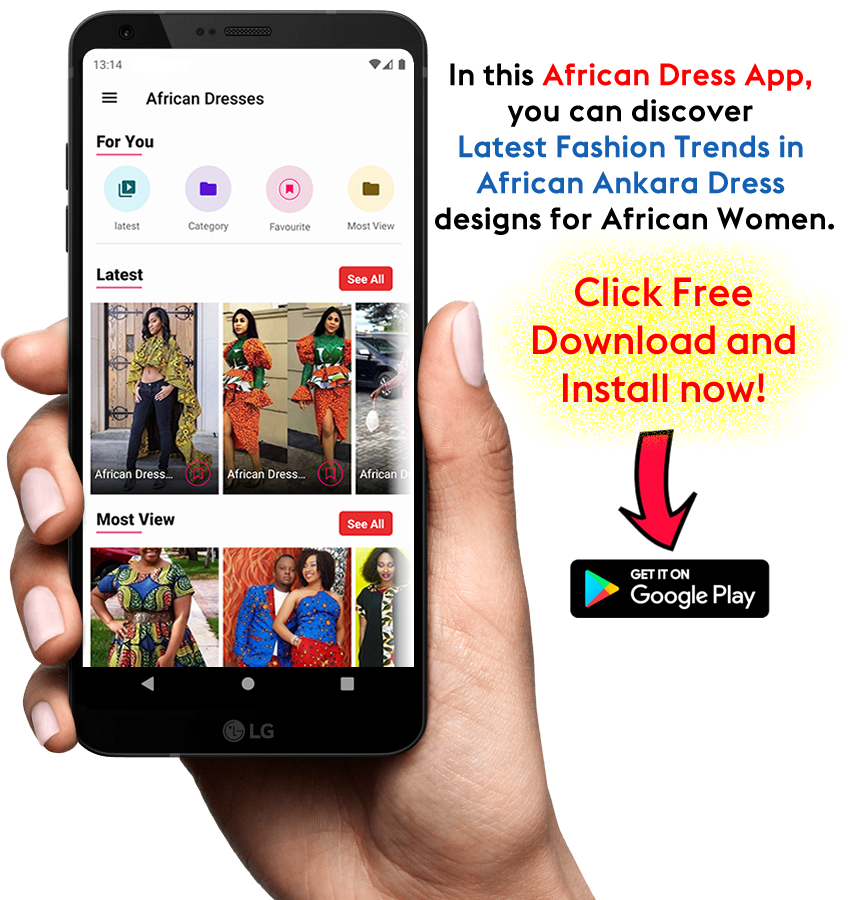Ghanaian weaving hairstyles have long been celebrated for their intricate patterns, cultural significance, and undeniable beauty. In 2023, these weaving techniques are experiencing a modern resurgence, combining traditional elements with contemporary flair. If you’re a modern lady looking to embrace the latest Ghanaian weaving hair trends, we’ve got you covered. Get ready to explore the captivating world of Ghanaian weaving hairstyles that will elevate your style to new heights!
1. “Bold and Beautiful: Chunky Twists for a Confident Look”
In this article, we dive into the world of chunky twists, a trend that celebrates the boldness and beauty of Ghanaian weaving. Discover how to achieve this statement hairstyle, which features larger and thicker twists that create a voluminous and eye-catching look. We provide step-by-step instructions, maintenance tips, and ideas for customization, allowing you to express your unique style with confidence.
2. “Stunning Cornrow Patterns: Elevate Your Braiding Game”
Cornrows have always been a staple in Ghanaian weaving hairstyles, and in 2023, they are taking on new forms and patterns. This article delves into the world of intricate cornrow designs, from geometric shapes to tribal-inspired motifs. Learn how to create these stunning patterns, and explore the versatility of cornrows by incorporating beads, accessories, or pops of color to make a bold fashion statement.
3. “Elegant Bantu Knots: Celebrating Afrocentric Style”
Bantu knots have a rich history in African culture, and their elegance and versatility make them a beloved choice among Ghanaian women. This article guides you through the process of creating Bantu knots, highlighting different variations and styling options. Discover how to rock these regal and sophisticated knots, whether you prefer a neat and uniform look or a more playful and creative arrangement.
4. “Chic and Glamorous Weave Ponytails: Effortless Sophistication”
Weave ponytails are a popular Ghanaian weaving hairstyle that exudes both elegance and ease. This article showcases various ways to incorporate weaves into ponytails, whether you prefer sleek and polished styles or voluminous and textured looks. We provide styling tips, product recommendations, and suggestions on how to accessorize your weave ponytail to achieve a glamorous and sophisticated appearance.
5. “Head-Turning Crochet Braids: Modernizing Traditional Techniques”
Crochet braids offer a convenient and stylish alternative to traditional weaving techniques. This article explores how to achieve stunning crochet braids with various hair textures, lengths, and colors. From versatile curly crochet styles to faux locs and goddess braids, we highlight the latest trends and techniques to help you achieve head-turning hairstyles that blend tradition with modernity.
Conclusion:
As the modern lady embraces her heritage and seeks new ways to express her individuality, Ghanaian weaving hairstyles provide a perfect blend of tradition and modernity. In 2023, Ghanaian weaving trends are taking on new dimensions, with chunky twists, intricate cornrow patterns, elegant Bantu knots, chic weave ponytails, and head-turning crochet braids stealing the spotlight. By exploring these hairstyles and experimenting with different variations, you can embrace the beauty, culture, and sophistication of Ghanaian weaving while making a bold statement in the modern world. Elevate your style and radiate confidence with these captivating Ghanaian weaving hair trends of 2023.
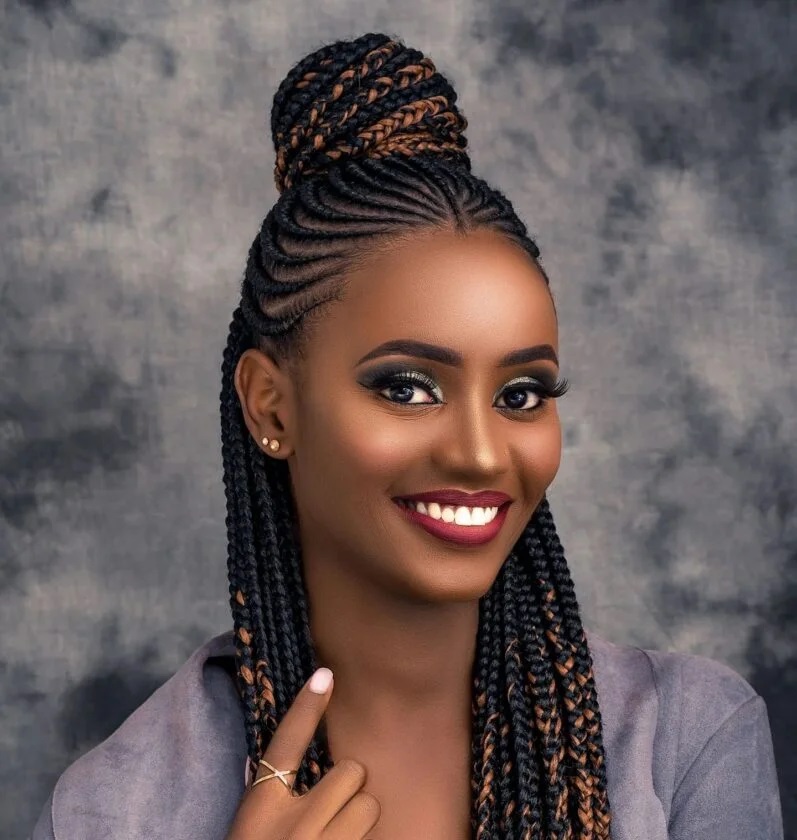
Traditionally, techniques for weaving in Ghana were passed down the generations by word of mouth and study of the skills needed to run the loom. Today, a combination of traditional techniques and recent technology is helping revive one of African’s oldest art forms….
This style features very elaborate loops that are woven parallel together as part of the design. They are intricate and require precise finger work. This ornamental hairstyle also produces a unique pattern often surrounded by an outgrowth effect.
Over the past decade, Ghana has been producing some of the best weaver’s hair and designs. Mostly people (on average) have chopped their hair short and earned a lot of money from hairdressing in Ghana. Either this is out of natural curiosity or the obsession for trendiness.
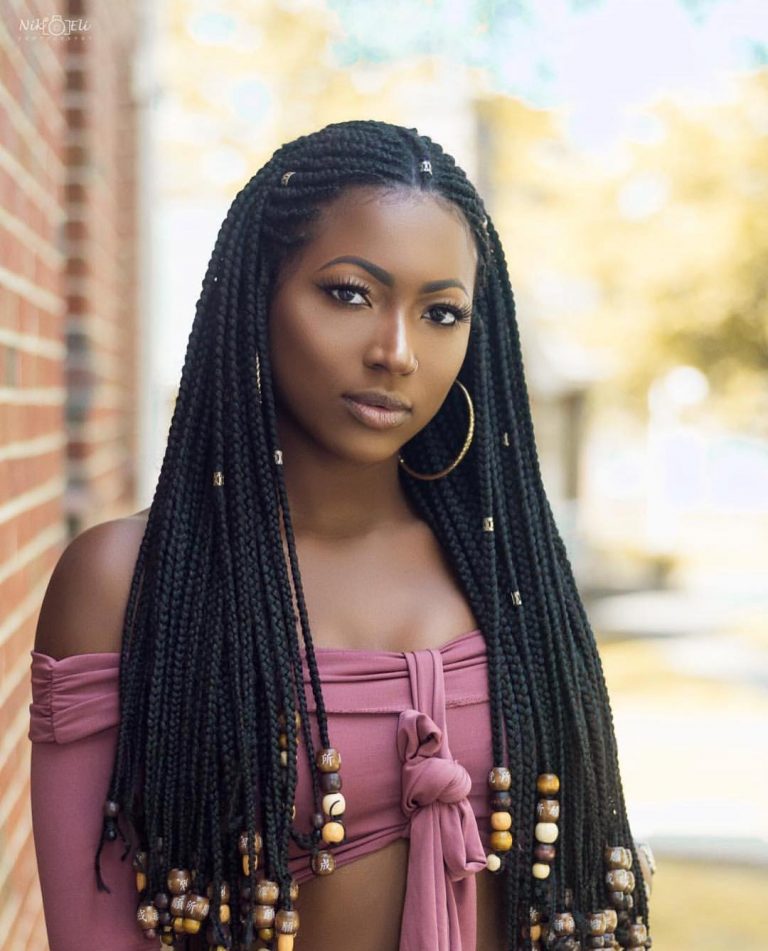
Hairstylists throughout Africa have benefited from Ghana and started imitating these hairstyles exclusively. These come in a wide variety of forms: from new groups to ensembles that have become popular over time. The afro is one noted example where it appears as if Queen Esther herself created it for her favorite Sudanese servant-girl named Lu Okheafo who worked for kings Solomon and David, before becoming a Queen herself- Bibili says that “she had nothing to do but sleep.”
Some people believe these changes are not sustainable due to both lifestyle factors as well as natural resources available locally – though no ecosystem is able to meet continual demands without compromising itself eventually. To spread
Ghanaian weavers experiment with new materials and designs from centuries of weaving tradition and culture.
